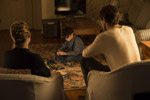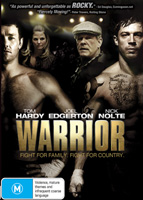Joel Edgerton Loving
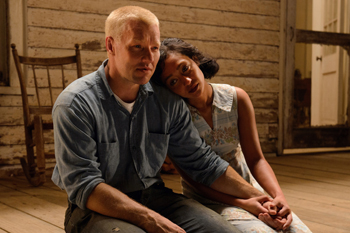
Joel Edgerton Loving
Cast: Joel Edgerton, Michael Shannon, Ruth Negga
Director:
Genre: Biography, Drama
Rated: PG
Running Time: 123 minutes
Synopsis: Loving is the new film from acclaimed writer/director Jeff Nichols (Take Shelter, Mud, Midnight Special). Loving celebrates the real-life courage and commitment of an interracial couple, Richard and Mildred Loving (portrayed in the film by Joel Edgerton and Ruth Negga), who fell in love and were married in 1958.
The couple had grown up in Central Point, a small town in Virginia that was more integrated than surrounding areas in the American South. Yet it was the state of Virginia, where they were making their home and starting a family, that first jailed and then banished them for defying its law against interracial marriage. Richard and Mildred relocated with their children to the inner city of Washington, D.C.
While relatives made them feel welcome there, the more urban environment did not feel like home to them. Ultimately, the pull of their roots in Virginia would spur Mildred to try to find a way back.
Their civil rights case, Loving v. Virginia, went all the way to the Supreme Court, which in 1967 reaffirmed the very foundation of the right to marry. Richard and Mildred returned home and their love story has become an inspiration to couples ever since.
Loving
Release Date: March 16th, 2017
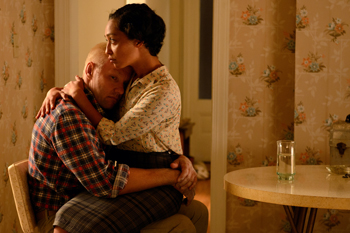 Background: Timeline for Loving v. Virginia
Background: Timeline for Loving v. Virginia
October 29, 1933 Richard Perry Loving is born in Central Point, VA.
July 22, 1939 Mildred Delores Jeter is born in Central Point, VA.
June 2, 1958 Expecting a child together and unable to wed in their segregated home state of Virginia, Richard and Mildred are married in Washington, D.C.; they return to their integrated community of Central Point and move into Mildred's family's home.
July 11, 1958 Bernard Mahon, Virginia Commonwealth's attorney for Caroline County, obtains arrest warrants for Richard and Mildred Loving.
July 12, 1958 At 2:00 AM, Sheriff R. Garnett Brooks and his deputies burst into the sleeping couple's bedroom and arrest them; the Lovings are taken to jail in the town of Bowling Green, where Richard spends one night behind bars before being released on $1,000 bail.
July 13-17, 1958 Sheriff Brooks refuses to let Richard bail out Mildred, and she spends five nights in jail before being released on $1,000 bail.
October 1958 The Lovings are indicted for violating Virginia's Racial Integrity Act.
January 1959 The Lovings are advised to plead guilty, and after doing so are sentenced by Judge Leon Bazile to one year in jail; their sentences are suspended on the provision that they leave 'Caroline County and the state of Virginia at once and do not return together or at the same time to said county and state for a period of twenty-five years."
The Lovings move to Washington, D.C., where they live with Mildred's cousin Alex Byrd and his wife Laura.
1963 Mildred writes to United States Attorney General Robert F. Kennedy, asking if he can aid her and Richard; Kennedy replies that he himself cannot help but has referred their case to the Washington chapter of the American Civil Liberties Union (ACLU).
In June, the Lovings' case is assigned to ACLU attorney Bernard Cohen; a few months later, Philip Hirschkop, a civil rights lawyer, joins the case and both attorneys work pro bono. In November, Bernard Cohen files a motion with Judge Bazile to vacate the Lovings' conviction and set aside the sentence.
1964 The Lovings and their three children move back to Virginia, living in secrecy in a farmhouse in King & Queen County.
January 22, 1965 Judge Bazile denies the motion and defends Virginia's anti-miscegenation (i.e., anti-interracial unions) laws in his ruling: 'Almighty God created the races white, black, yellow, Malay and red, and he placed them on separate continents. And but for the interference with his [arrangement] there would be no cause for such marriages. The fact that he separated the races shows that he did not intend for the races to mix."
March 18, 1966 Life Magazine issue includes (without byline) the article 'The Crime of Being Married," accompanied by its photographer Grey Villet's black-and-white photos of the Lovings in and around their home in King & Queen County; the article cites the ruling earlier in the month and notes that 'Loving vs. Virginia may well become the next big landmark in civil rights."
March 1966 Loving v. Virginia is appealed to the U.S. Supreme Court.
April 9, 1967 The Supreme Court hears oral arguments in Loving v. Virginia, including Bernard Cohen's: 'The Lovings have the right to go to sleep at night knowing that if should they not wake in the morning, their children would have the right to inherit from them. They have the right to be secure in knowing that, if they go to sleep and do not wake in the morning, that one of them, a survivor of them, has the right to Social Security benefits."
June 12, 1967 The Supreme Court issues its unanimous decision striking down all anti-miscegenation laws as unconstitutional and in violation of the Fourteenth Amendment's guarantee of equality, and Chief Justice Earl Warren writes the opinion on behalf of the Court: 'Under our Constitution, the freedom to marry, or not marry, a person of another race resides with the individual, and cannot be infringed by the State."
Every June 12 Loving Day, an annual remembrance of the Supreme Court's ruling.
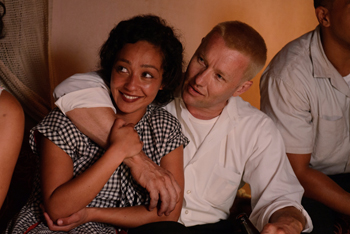 About The Production
About The Production
'Why didn't I know about this before?"
This is a common refrain heard when discovering human rights breakthroughs from decades past – and the love story of Richard and Mildred Loving has paved the way for many more since.
Richard and Mildred's history is now told anew by acclaimed writer/director Jeff Nichols in Loving. 'I was struck by the simplicity of their beautiful love story," says the filmmaker.
Richard, who was white, and Mildred, who was African-American and Native-American, were an ordinary couple from Central Point, Virginia. They decided to marry and start a family. Yet, at that time in Virginia, what they did was against the law and they were arrested soon after getting married.
As the plaintiffs in Loving v. Virginia, they were catalysts for the Supreme Court decision that abolished anti-miscegenation laws – or, laws against interracial marriage – in the United States. In establishing marriage as a fundamental right, Loving v. Virginia is still frequently cited in court cases today, including in challenges to gay marriage bans.
But the Lovings were not activists; they merely reasonably expected that their fully legal marriage in Washington D.C. would suffice for them to live peacefully in their hometown of Central Point. Initially, they made no appeal after they were arrested for violating Virginia's anti-miscegenation laws, and agreed to a plea bargain that effectively banished them from their home state.
When the Lovings finally sought legal aid in 1963, their sole aim was to be able to get back to – and live in their – home. It was only in 1965, at the urging of their attorneys Bernard Cohen and Philip Hirschkop, that the couple agreed to go public with their story and talk to the press. After the Supreme Court handed down its decision in their favour in June 1967, the Lovings went back to their everyday lives and to raising their three children in Central Point, and rarely gave interviews.
In 2008, the surviving member of the couple, Mildred, passed away. Reading about Mildred, documentary filmmaker Nancy Buirski was moved by the Lovings' unshakable devotion to one another – and by the contemporary relevance of their case. Nancy Buirski decided to make a documentary feature about Richard and Mildred Loving. Her research led her to television news producer Hope Ryden, who had spent hours filming the Lovings at home in 1965 and then returned in 1967 for ABC-TV to profile them on the eve of the ruling. That footage and other archival resources, including luminous photos by Life Magazine photographer Grey Villet, were utilised by Nancy Buirski in writing, producing and directing The Loving Story. The documentary played at festivals in 2011 before being shown on HBO on Valentine's Day, 2012. It won a Peabody Award and an Emmy Award, among other honours, and captivated audiences and critics alike with its depiction of a committed and courageous couple who, above all else, were very much in love.
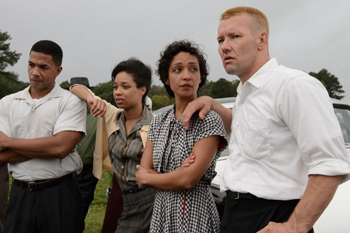 One of those captivated viewers was Academy Award winning actor Colin Firth, who was already aware of the documentary; Nancy Buirski had been in contact with Colin Firth regarding a feature version of the story after learning from Colin Firth's wife Livia of his interest in American politics and social history. By 2009, Nancy Buirski and Colin Firth were brainstorming a narrative structure and began working on a screenplay.
One of those captivated viewers was Academy Award winning actor Colin Firth, who was already aware of the documentary; Nancy Buirski had been in contact with Colin Firth regarding a feature version of the story after learning from Colin Firth's wife Livia of his interest in American politics and social history. By 2009, Nancy Buirski and Colin Firth were brainstorming a narrative structure and began working on a screenplay. In January 2011, Colin Firth called Nancy Buirski to tell her that he was teaming with Ged Doherty to launch a production company, Raindog Films, and that as a first project, he had brought up to Ged Doherty a narrative feature version of The Loving Story. Nancy Buirski remembers, 'Colin Firth had just won the Golden Globe Award for The King's Speech but I was the one who was overjoyed!"
Ged Doherty remarks, 'Colin Firth was very taken with the simplicity of the story, with how this ordinary couple made a huge difference in the lives of other couples."
'After watching the documentary, I became obsessed. I literally did not sleep for 48 hours because I was looking at everything I could find online. Yes, this was a landmark legal case, but first and foremost at its heart it was a beautiful love story. Colin Firth and I felt more people worldwide should know about the Lovings, and we were determined to tell their story as a dramatic feature based in part on Nancy Buirski's documentary."
The next step was to find a writer and director. When the three producers saw Jeff Nichols' Mud at a specially arranged screening in 2012, they sensed that the filmmaker's cinematic sensibility and intuitive depictions of Southern men and women would be ideal for the film they wanted to make.
Ged Doherty adds, 'We also watched Take Shelter. With Jeff Nichols's work the tension and drama are rich and often are in what is not said; he conveys so much with just a look to the camera or a shot of a landscape. We felt that would suit Richard and Mildred Loving, and the character of people that they were."
Having already made three feature films, Jeff Nichols had not considered writing or directing a film that wasn't a product of his own imagination. Still, he agreed to consider the project – and its story, which intrigued him.
Jeff Nichols watched the documentary and noted the import and continuing positive impact of Loving v. Virginia. But he was most drawn to Richard and Mildred's quiet determination to live and love as they chose.
'The love between two people was what impacted me emotionally," Jeff Nichols affirms. 'Out of that grows the other importance of the story, which is the Supreme Court decision. I believe that any time we can be reminded of the elegance and the simple beauty of love, it's a good thing."
The tenor of life in the Lovings' rural hometown, Central Point, further resonated powerfully with Jeff Nichols. A remote agricultural community tucked into the hills of Virginia's Caroline County, Central Point was a racially mixed town of sharecroppers and laborers. Poverty was the common denominator; African-Americans, whites and Native-Americans had mixed freely for generations. Residents would help one another without hesitation.
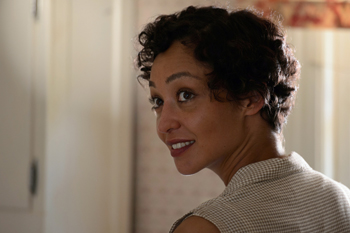
Learning about the upbringing that had forged both Richard and Mildred's strengths and values reminded Nichols of what his father had told him about his own small-town upbringing. He reflects, 'How their community was revealed in Nancy's documentary was meaningful to me, because it echoed what I had heard from my father, who grew up in Altheimer, Arkansas. My dad said, -We all needed one another to get by.'"
Jeff Nichols envisioned a feature that followed Richard and Mildred Loving as they weathered the uncertainty of the years 1958 to 1967, rather than one that recorded their march into the history books. He remarks, 'There's no doubt that the court case could fill a whole film in itself. But I didn't want it to overtake the love story, which is what I wanted to make – especially having not made one before, although Mud dealt with unrequited love – rather than a legal tale."
Honing in on his character-driven approach to the material, he then met with the producers, who Jeff Nichols found 'were wonderfully supportive of how I wanted to tell the story." Although Doherty, Buirski and Colin Firth wanted to sign Nichols as a writer/director, he preferred to exercise caution and initially committed only to writing the screenplay. Academy Award-nominated producer Sarah Green, who had become a key collaborator of Nichols on his projects, realised that 'Jeff Nichols had never adapted someone else's material, and it was a tough nut for him to crack."
Jeff Nichols admits, 'It took me a couple of months. Finally I came to terms with how these were real people yet were also going to be characters in my movie, so I needed to take ownership while trying to write in their voices."
Sarah Green recalls, 'I remember him calling me one day to say, -You know, I think I've got it, but it's really intimate. I don't know if it's what anyone's going to want, but this is what I want to tell.'"
'I said, -That's your job. Tell it the way you see it.'" She praises the understanding and patience shown by her fellow producers as Jeff Nichols found his footing. 'It was wonderful working with Ged Dohety, Nancy Buirski and Colin Firth as producers because they truly trusted his process – and once Jeff got a handle on it, it was clear that he was ready to direct the movie."
Jeff Nichols sought to convey 'tension in the film, yet keep it very quiet; firebombs aren't exploding, things aren't burning. They're in a maelstrom, yet they're also in a small region going about their everyday lives. Loving does not give the depiction of the South that audiences might expect."
Unusually for the movie business, Jeff Nichols' first draft of the screenplay ended up being, for all intents and purposes, the only draft. Ged Doherty recalls, 'It was absolutely beautiful. You could envisage every scene, including the pauses. I think from the first draft to the second draft to the shooting draft, we might have changed three words, two commas, and a typo."
Sarah Green realised
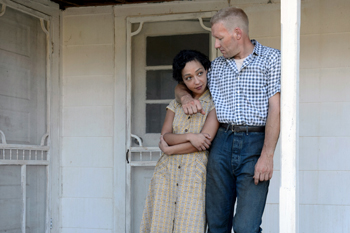 that Jeff Nichols had absorbed the Lovings' viewpoint: namely, that they hadn't set out to change history. She offers, 'Their thinking was, -How do we live our lives where we need to be, where we belong?' In many films I've done, characters are trying to find where they belong. Here, it was two people who knew where they belong. What Jeff explores with Loving is not their having to find it, but their yearning to get back to it because they've been wrenched away."
that Jeff Nichols had absorbed the Lovings' viewpoint: namely, that they hadn't set out to change history. She offers, 'Their thinking was, -How do we live our lives where we need to be, where we belong?' In many films I've done, characters are trying to find where they belong. Here, it was two people who knew where they belong. What Jeff explores with Loving is not their having to find it, but their yearning to get back to it because they've been wrenched away." Jeff Nichols adds, 'They weren't martyrs, and didn't want to be. They weren't symbols, and didn't want to be. They were two people in love who wanted to be with each other and their family."
While Jeff Nichols and Sarah Green would make another movie first, Midnight Special, they got an unexpectedly early jump on Loving casting in the fall of 2013 during a business trip to Los Angeles. Although they weren't ready to start reading actors, casting agent Francine Maisler urged them to meet with Ruth Negga, a London-based actress who would be in town.
Ruth Negga had been deeply affected by The Loving Story. She explains, 'I thought the documentary was brilliant and I couldn't believe I hadn't heard of Richard and Mildred before. I was completely fascinated, not only because Loving v. Virginia was a landmark civil rights case, but also because theirs is the most beautiful love story. Their story just stayed with me. All Mildred wanted was to be able to be married to the man she loved. Not every hero has a loud voice."
'Jeff Nichols's script tells the story of two people in love, not two activists – even though they did change the course of American legal history. I feel that all of his films are about everyday people."
Once she had gotten the script pages, the actress holed up in her LA hotel room for three days to prepare, trying to channel Mildred as best she could. She reports, 'I watched the documentary over and over again and worked on those scenes from the script like I had never worked on anything before. I felt such an affinity with Mildred and I couldn't imagine not playing the part."
Jeff Nichols reflects, 'We've worked with Francine Maisler on several movies now, so we took her advice to meet with this actress whom we didn't know. In walks Ruth Negga and she's smaller and more compact than Mildred Loving, who was nicknamed -stringbean.' I thought, -Well…' But then Ruth started on a scene, and it was extraordinary; she was able to manifest everything that we knew about Mildred from the documentary footage. This was in no way an imitation; for Sarah and me it was like, -This is Mildred.'"
'By the time we made the movie two years later, Ruth had become Mildred even more so; she had absorbed Mildred's nature and would give it back to the camera."
It was not long after cameras rolled on Midnight Special that Nichols sensed that he had found his Richard Loving. In collaborating for the first time with award winning Australian actor/filmmaker Joel Edgerton, a strong working relationship had developed straight away. Then, one day on the set, Nichols noticed something: 'Joel is pretty tall and we'd given him a kind of buzzcut for Midnight Special. I thought, -He kind of looks like Richard Loving…'"
When Jeff Nichols discussed the potential new project with Edgerton, the actor remembers being struck by 'what it would be like for you to be told that because you married the person that you loved you now had to go to prison, or you had to be exiled and live away from everybody that you knew?"
'Jeff Nichols does not try to draw attention to his filmmaking. With Loving, he takes a very subtle approach to the drama of the Lovings' situation, but within that subtlety is something urgent that speaks to everyone."
Jeff Nichols realised that Joel Edgerton could handle Richard's Southern accent – and something more. The writer/director remarks, 'Joel Edgerton has an amazing facility with accents, which involves specific vocal mechanics. But what's really interesting about Joel as an actor is that he can access the emotions which play out on his face; this was crucial for Loving because Richard says very little but has deep reserves of feeling. Joel Edgerton was able to manifest that in the countenance, the way Richard carried himself. His intelligence and talent made him the actor to portray a man who is very much of his time and place."
Joel Edgerton would ultimately research his portrayal of Richard by watching him as much
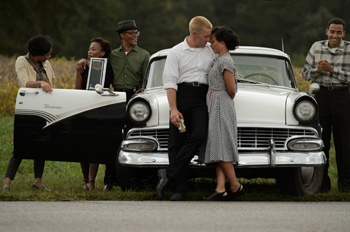 as if not more than listening to him; Richard was rarely captured speaking. 'He was clearly quite shy of being in front of the camera," Joel Edgerton observes. 'One of the challenges I faced in playing him was that Richard could easily come across as someone who isn't very intelligent, and I believe he in fact was."
as if not more than listening to him; Richard was rarely captured speaking. 'He was clearly quite shy of being in front of the camera," Joel Edgerton observes. 'One of the challenges I faced in playing him was that Richard could easily come across as someone who isn't very intelligent, and I believe he in fact was." 'Who was he? He was a bricklayer, a very physical guy, and not so much a cerebral person. I think what was an adjustment for him in dealing with the situation they found themselves in was trying to wrap his head around legal arguments and ways of doing things that his instinct was telling him were wrong."
While lead casting for Loving coalesced, Marc Turtletaub and Peter Saraf, Academy Award nominated producers who run the production and financing company Big Beach, heard that Jeff Nichols was developing a new movie. Already admirers of his work, they read his Loving script and sought to help make sure the movie got made.
Marc Turtletaub states, 'Jeff Nichols has a unique ability among contemporary filmmakers to combine an incredible visual style of storytelling with deeply emotionally engaging characters."
Peter Saraf adds, 'When we thought about the importance of the story and its relevance today we knew we had to be a part of making this film."
Jeff Nichols muses, 'As we readied the movie, there was still so much racial tension in our society that it was rendering the film much more relevant than we had anticipated, even though everyone was initially drawn to conveying a love story that resonated." Peter Saraf affirms, 'First and foremost, we were all deeply moved by the romance that endured through such adversity."
That adversity reaches a turning point for the Lovings in 1963. Four years into their forced relocation in Washington, D.C., the family of five is short on space and money, and desperately missing their families back in Central Point. Mildred takes action, writing a letter to Attorney General Robert F. Kennedy and asking for his help. Negga muses, 'Over the course of time, Mildred discovers that she does have a steel thread in her. She might be innocent, but she's not naïve. She becomes more confident in her own opinion and realises that it's up to her to take control of the situation – and to not be intimidated by authority."
To that end, one of the more difficult roles to cast was that of Sheriff R. Garnett Brooks, who arrests the Lovings in the middle of the night in their home. Jeff Nichols didn't see Garnett Brooks as the bad guy of the story or even as a nemesis to the couple, noting that the lawman's beliefs about race and marriage were commonplace. 'I see Sheriff Brooks as being part of the equation," Jeff Nichols remarks. 'Having grown up in Arkansas, I have family members that are racists. It's not something I'm proud of, but I understand how these attitudes are perpetuated, and that everyone sets, or has set, their own point of view."
'Sheriff R. Garnett Brooks was quoted as saying -a robin's a robin, a sparrow is a sparrow,' and he believed that. It was important that Brooks not be played as the slack-jawed and mean Southern sheriff stereotype."
For the role, Joel Edgerton suggested Marton Csokas, a versatile actor whose authoritative physicality and height matched up with those of the real-life Brooks. After meeting Marton Csokas, Nichols was intrigued by his perspective on the part. He remembers, 'Marton Csokas saw Sheriff Brooks as seeing himself as an adult dealing with wayward children. They were born and raised in a part of the South that didn't necessarily see the lines between colour, and his stance was, God put those lines there."
Taking the part, Marton Csokas pored over published records and spoke to family members. He comments, 'From the home perspective, here was a husband and father who was a hardworking, loyal, strict human being who loved his family and animals, and was a stickler for the law. The statements Sheriff Brooks makes are indicative of the status quo and what people believed. That was the law at the time. So he was doing his job to the nth degree, which is important to quantify."
Throughout the casting process, Jeff Nichols kept front-of-mind the physical characteristics of the real people portrayed in the film. Watching television one night, he caught Kroll Show, the satire created by and starring Nick Kroll, and noted Nick Kroll's resemblance to the Lovings' ACLU attorney Bernard Cohen. Jeff Nichols notes, 'I went online and watched more of Nick, and began to envision him as a good fit for Bernie."
Nick Kroll was not only familiar with the Lovings' story but also with Jeff Nichols' work. He says, 'I'd seen Take Shelter and Mud, and thought they were phenomenal movies. They are quite different from one another and yet you can still feel the larger hand at work; Jeff Nichols has a very special touch that he brings to his films."
'It was exciting to get the call that I was being considered for Loving, because of this filmmaker and this subject matter – which is still so relevant to us all."
A promising younger actor, Jon Bass, was cast to play alongside Kroll as Phil Hirschkop, the attorney who teamed with Cohen to see the Lovings' case through to victory. Bass remarks, 'When I researched the case, I realised just how much the Lovings were private people; they didn't want to be
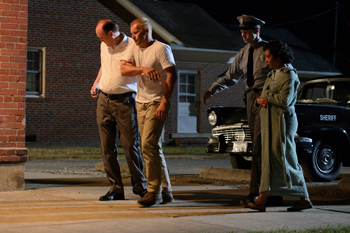 a huge news sensation. But they were part of a time where so much was happening for civil rights."
a huge news sensation. But they were part of a time where so much was happening for civil rights." 'There is such a veracity to Jeff Nicols' movies. He has an incredible team and can concentrate on what's important to him, which is the performances and the feeling of the story. Nick Kroll and I both have improv experience, but Jeff would have us find the moments in the silences."
Once Midnight Special was completed and pre-production on Loving began, location casting agents Erica Arvold and Anne Chapman were engaged to help bring the filmmakers actors to portray the Lovings' family members, friends and neighbours. For these roles, the filmmakers felt that well-known actors would be distracting.
Jeff Nichols explains, 'I was trying to get our depiction of the people and places and times as close to reality as possible – based on our research – and so I wanted the audience to believe in it as quickly as possible. We were building a community, one specific to the diverse racial make-up of Central Point. For the population mix we felt we needed all-but-unknown faces.
'We ended up with some of the most talented actors I've ever seen. The community and the families forged themselves in front of me."
Jeff Nichols' own community of creative colleagues that has convened from film to film reunited for the new project. In addition to producer Sarah Green and casting agent Francine Maisler, his returning core collaborators for Loving include director of photography Adam Stone, production designer Chad Keith, costume designer Erin Benach, composer David Wingo, editor Julie Monroe and executive producer Brian Kavanaugh-Jones; as well as, in smaller roles, a company of actors that includes Bill Camp, David Jensen and Michael Shannon. 'I hope we will always be making movies together, because they can be honest with me about the work," says Nichols of this filmmaking collective.
Loving began production in the fall of 2015. In a further emphasis on authenticity in recounting the Lovings' story, the movie was made on location in Virginia.
To Jeff Nichols, the Virginia countryside that he and Stone were lensing in widescreen was a revelation; the landscape itself could convey emotional importance in ways words could not. He reveals, 'So much of the story resides in Mildred and in her defining relationships to home and to this place. She was very much of the earth."
'When the family was forced to move to D.C., I feel it was a meaningful shift in her life, and a painful one. They had support there from friends and relatives, but, imagine having to go to a place full of asphalt and car horns when you've never been around those things on a daily basis or been that close to the city. Once I visited Virginia and saw how beautiful it was, it made sense that she wouldn't want to leave. Bowling Green and Central Point are fundamental building blocks – so to speak – in how and why Richard and Mildred's lives progressed as they did, and how everything followed from their being born and raised there."
Filming in the actual locations where events occurred contributed to the realism of Loving; the cast and crew experienced daily epiphanies while following in the Lovings' footsteps. Production designer Chad Keith was relieved to find that many of the public locations in Bowling Green were still intact and could be shown on-screen. He admits, 'I wasn't expecting the courthouse to still be in operation, but it is, and the jail where Mildred and Richard were locked up is still there as well."
'It was extraordinary to find ourselves setting up to film on the very same streets you see in photos and footage of the Lovings. I hope we captured a lot of moments between Joel Egerton and Ruth that Richard and Mildred lived."
The Lovings' surviving child, Peggy Loving, was a consultant to the production. She visited the set and was struck by how thoroughly the actors had channelled her parents – in character and in costume.
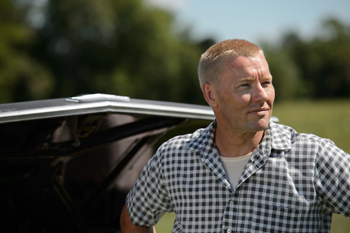 To effect the latter, Benach drew on any and all visual records of the Lovings while also incorporating imagery and styles of the period. In costuming Joel Edgerton, she studied Richard Loving's body language as well as his clothing. She observes, 'Richard had a way of slouching, with one hip forward and his back rounded. With Joel emulating that stance, I had to pay particular attention to the pants, because Richard wore his pants very high."
To effect the latter, Benach drew on any and all visual records of the Lovings while also incorporating imagery and styles of the period. In costuming Joel Edgerton, she studied Richard Loving's body language as well as his clothing. She observes, 'Richard had a way of slouching, with one hip forward and his back rounded. With Joel emulating that stance, I had to pay particular attention to the pants, because Richard wore his pants very high." 'We tried different measurements and, after that first fitting, we knew which ones worked and which ones definitely did not. After that, we had an almost scientific formula worked out: Joel would do the stance in the fitting and he and I would decide together if the pants looked and felt right before running it by Jeff."
For Ruth Negga, Benach constructed a wardrobe that re-created Mildred Loving's own while also conveying Mildred's progression from single to married to matriarch. One challenging component was crafting differently sized and shaped baby bumps that Negga would wear through Mildred's pregnancies. Here, too, the costume designer went beyond the surface; she wanted 'the bellies to also reflect how Mildred felt. For example, she is overwhelmed when she's pregnant and walking the supermarket aisles in her first days in D.C., so that outfit was made to feel like she's exploding out of it and is weighted down."
That scene is without dialogue, as are many of the ones between Edgerton and Negga, which was staying true to the film's subjects. The two actors found their footing as an on-screen couple whose love story began before the events depicted in Loving, says Negga, because 'Jeff's script is infused with Richard and Mildred's energy. I feel that made it possible for Joel Edgerton and I to just slip into being them. It was like second nature."
Joel Edgerton concurs, saying, 'You never know if chemistry is going to happen, but Ruth and I quickly became very comfortable together on-set. Jeff Nichol's script is so beautifully written. This is a story that gets into your heart and touches deep wells of feeling. It was so special for us to be able to express layers of emotion without words."
Loving
Release Date: March 16th, 2017
Have You Seen This?
MORE
- Mission: Impossible Fallout
- Glenn Close The Wife
- Allison Chhorn Stanley's Mouth Interview
- Benicio Del Toro Sicario: Day of the Soldado
- Dame Judi Dench Tea With The Dames
- Sandra Bullock Ocean's 8
- Chris Pratt Jurassic World: Fallen Kingdom
- Claudia Sangiorgi Dalimore and Michelle Grace...
- Rachel McAdams Disobedience Interview
- Sebastián Lelio and Alessandro Nivola...
- Perri Cummings Trench Interview

